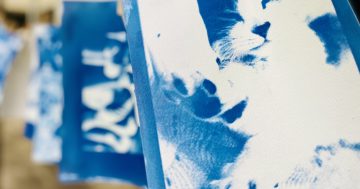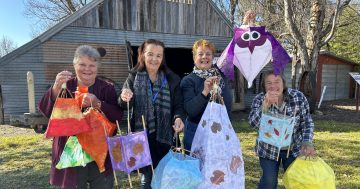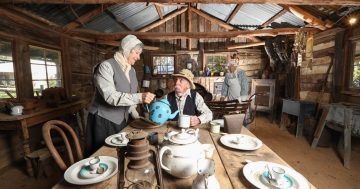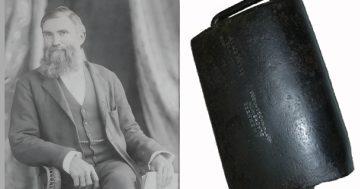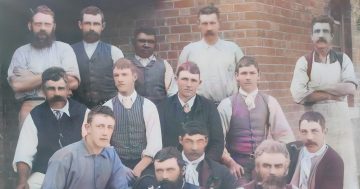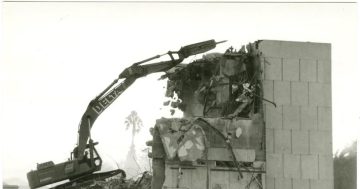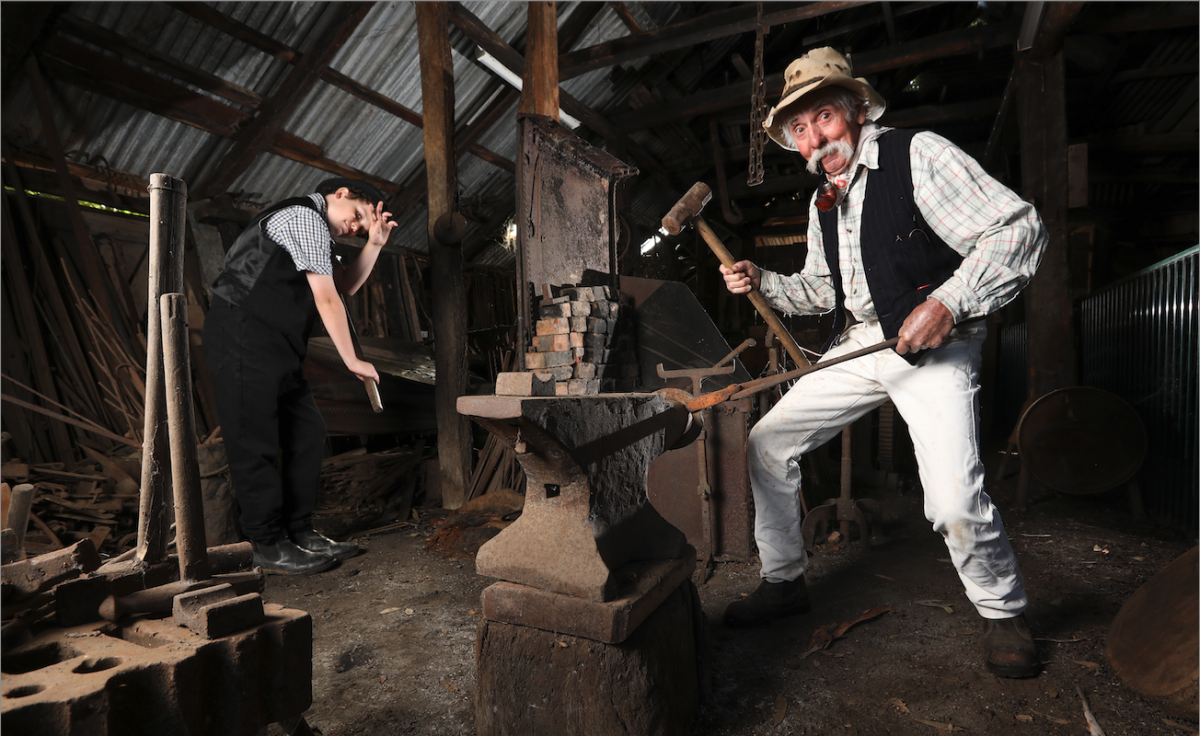
The Jindera Pioneer Museum will open the town’s blacksmith building to the community. Image: Supplied.
Visitors will be able to conjure images of the hot, dirty and hard work of the town’s blacksmith when the Jindera Pioneer Museum opens the doors of the original 1872 precinct to the public on 18 September.
In the town’s main street, and opposite the museum, the iconic Jindera blacksmith building has only previously been opened on request.
The addition of a turnstile will now allow the blacksmith to open regularly, ready for those who pay their museum entry fee to explore the area along with the two acres of grounds and exhibits in the main part of the attraction.
Museum president Margie Wehner said the opening of the blacksmith had been some time in the making and would become an important part of the museum’s overall appeal.
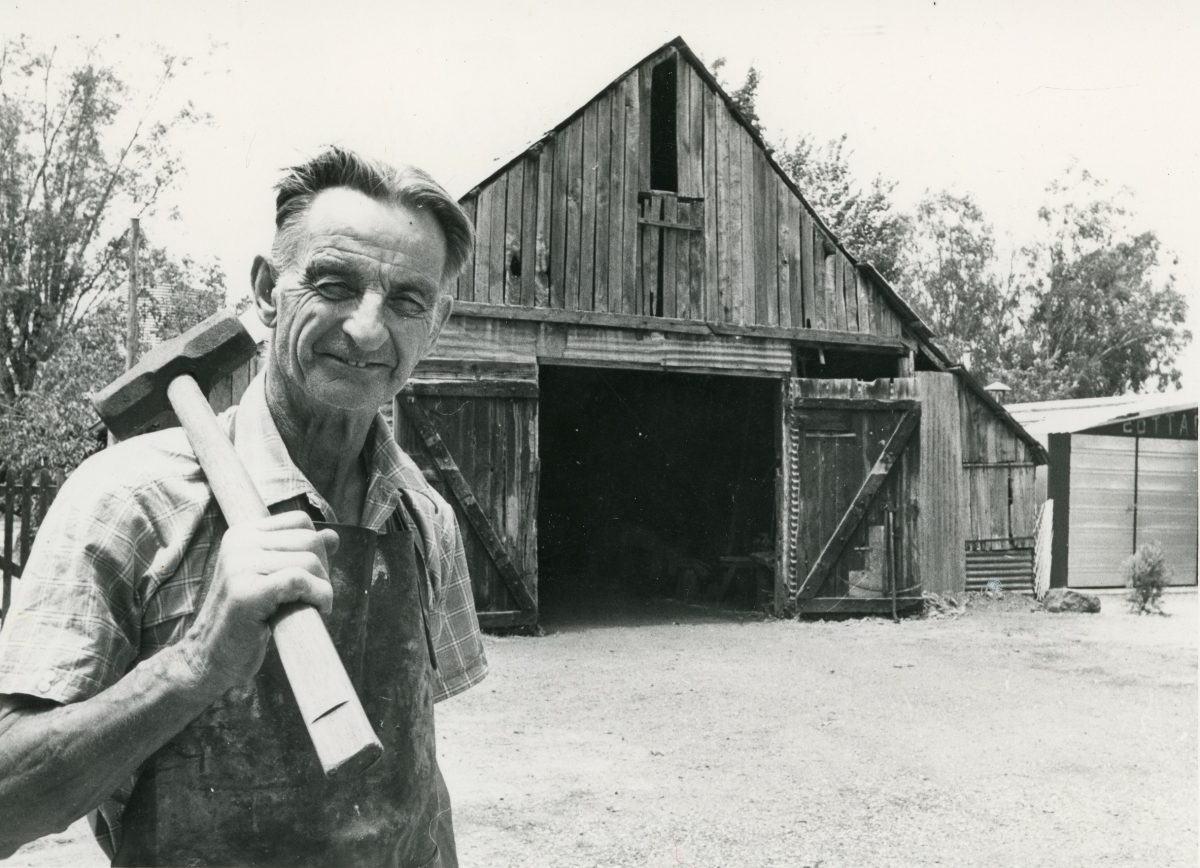
Blacksmith Ernst Wehner in 1973. Photo: Supplied.
It’s a particularly poignant moment for Margie, whose grandfather Fred Wehner and father Ernie were the town blacksmiths from 1899 to 1994.
“My grandfather Fred arrived from Germany in 1890, following his brother,” she said.
“He was a ticketed blacksmith and wheelwright. In 1892 he travelled to Walla Walla to work for the blacksmith there. In 1899 he moved to Jindera working at the blacksmith which was then owned by the Molkentin family.”
Reinhardt Molkentin was the first blacksmith and wheelwright for the settlement but in only his early 30s he was involved in a fatal workplace accident in 1885.
Harry Harberecht, who Reinhardt was in partnership with, carried on the business until Reinhardt’s two sons, Paul and Fred could run the business for their mother.
“In 1904 my grandfather married Bertha Molkentin, sister to Paul and Fred. He took over the wheelwrighting at the Jindera blacksmith in 1908 and in 1915 he purchased the business from the Molkentins and continued operating the business with my father (Ernst/Ernie).
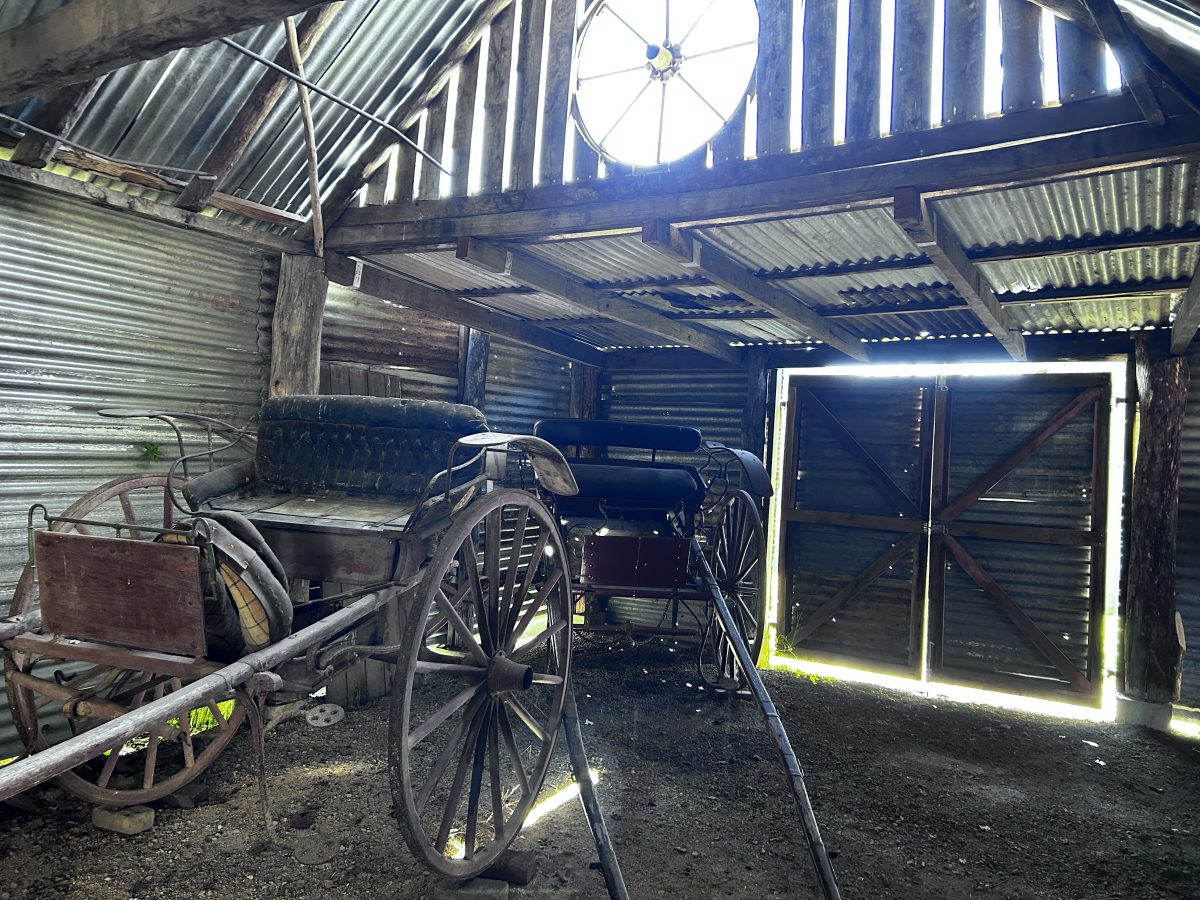
The old blacksmith shop is a treasure trove for history lovers. Photo: Supplied.
When Fred Wehner died in 1957, Ernie, or ‘Frostie’ as he was known due to his white legs, operated as both the village’s blacksmith and wheelwright until he died in 1994.
The blacksmith precinct will be open for viewing from 18 September. The work area has remained largely untouched since it closed in 1994 with tools and equipment appearing as they would have more than 100 years ago.
According to Margie, the opening of the blacksmith will be an opportunity for people to learn about its role in the early years of European settlement in NSW.
“The three things that were essential for a settlement were a place to congregate, socialise and seek sustenance (the hotel), a place to purchase goods (a store) and a place to ensure your implements and horse could continue with a day’s work (the blacksmith and wheelwright); and so it was in Jindera,” said Margie.
The Jindera hotel opened in 1870, the Molkentin blacksmith in 1872 and Wagner’s Store in 1874.
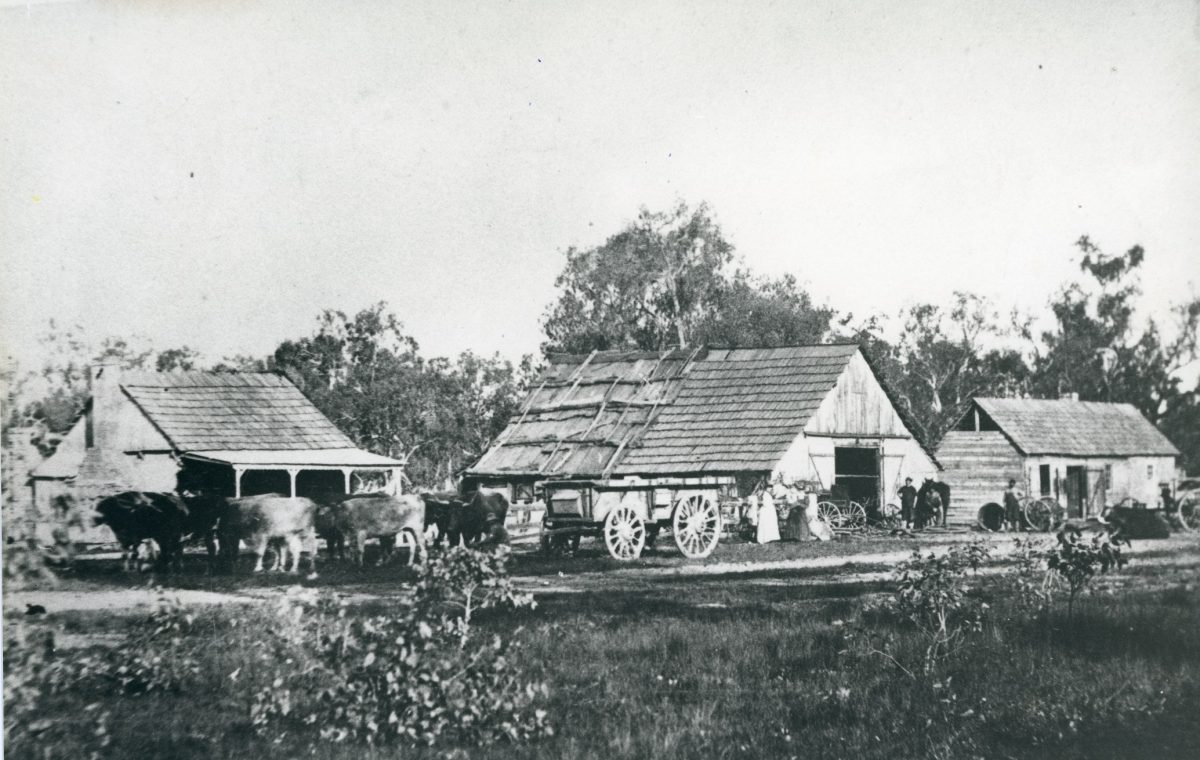
The original ‘smithy’ back in the 19th Century. Photo: Supplied.
The Jindera Pioneer Museum shares an insight into the art of blacksmithing
A blacksmith’s forge or ‘smithy’ is often a dark place. This is not only a result of the buildup of soot from the fire and anvil, but the dim light helps the smith to visually assess how hot a piece of metal has become.
The blacksmith worked predominantly with iron and steel, as most farm implements and tools were made from these metals.
In the early days of European settlement, a blacksmith shop was a fix-it-all station. Whatever could not be repaired on-farm was taken to the blacksmith to fix, reconstruct, sharpen or reinvent.
The work was hot, dirty and hard – strength was an essential characteristic of any blacksmith.
They would often create their own tools to do a specific job that was presented to them.
Horse shoeing was often another skill they learned, crafting shoes to fit each individual horse.
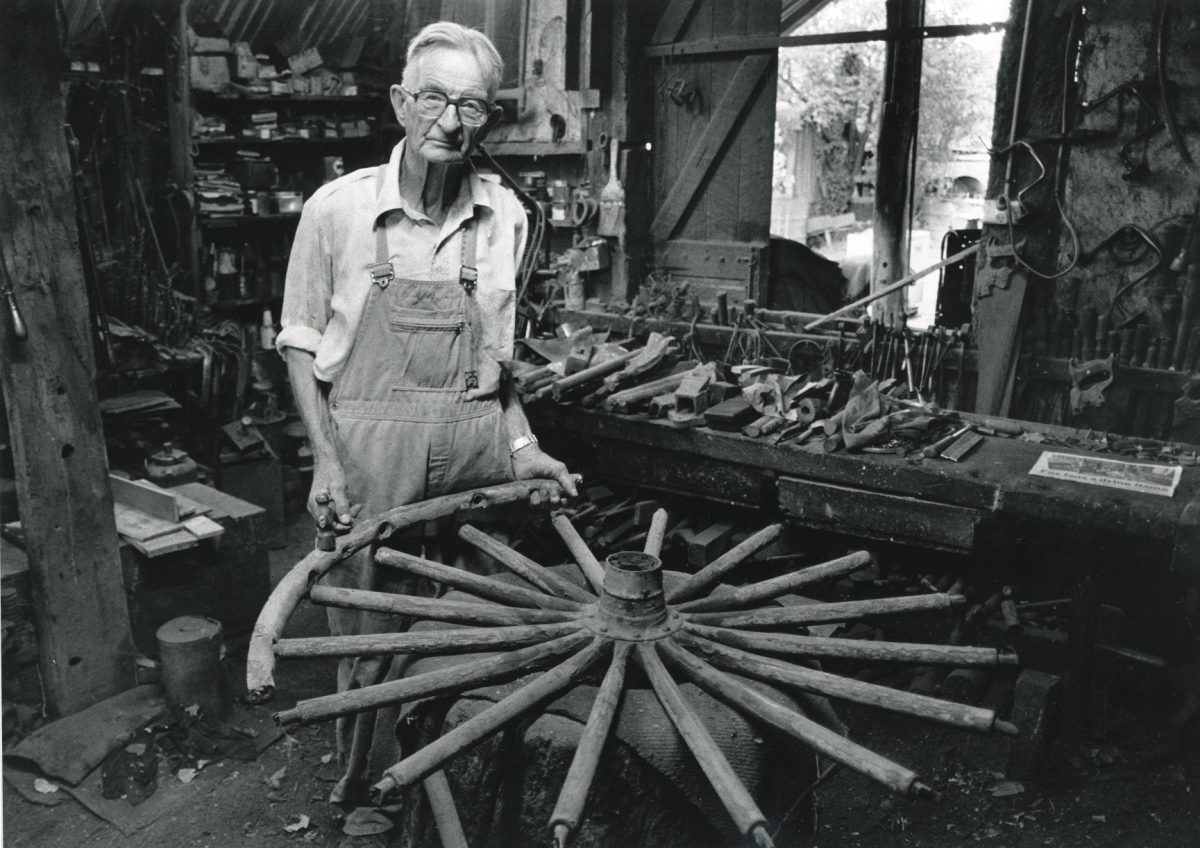
Ernie takes a look at an old wagon wheel in 1988. Photo: Supplied.
In the days of early settlement, there would have been a demarcation between a blacksmith and a wheelwright, however, as motor vehicles appeared and horse-drawn implements were replaced with motorised versions, the blacksmith and wheelwright were usually one and the same.
A good wheelwright would know by feel, not by reasoning, the properties needed for the spoke and rim to come together accurately, and a well-honed intuition was essential.
With the advent of the slow combustion engine and the motorisation of implements in the early 1900s, the need for blacksmithing skills dwindled and very few remain today.
If you’d like to take a trip back in time and check out the old smithy, the Jindera Museum is open seven days a week.







